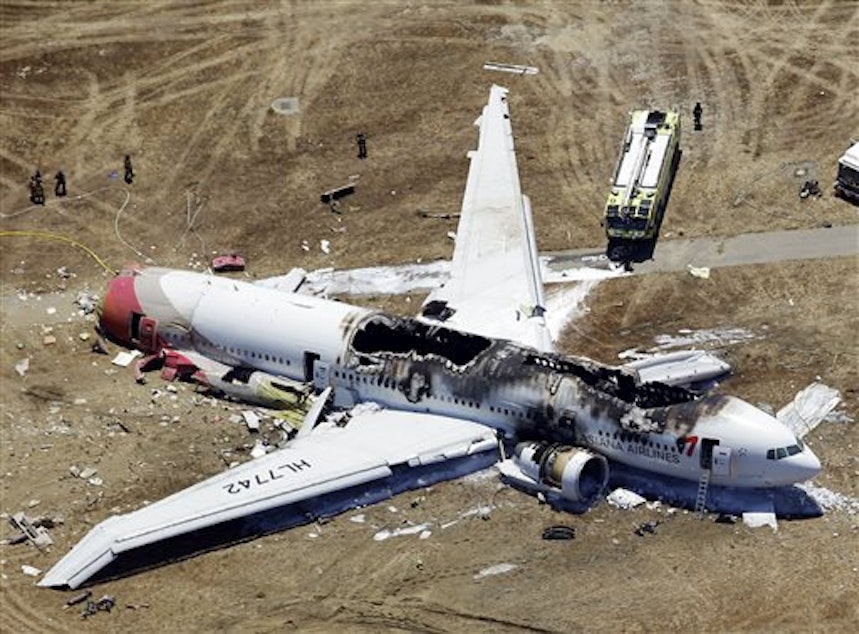Boeing Bears Some Blame For Asiana Crash Says Safety Board

The National Transportation Safety Board has concluded that Boeing's design of the 777’s automated systems was a contributing factor in the crash of Asiana Airlines Flight 214 that killed three Chinese teenagers last summer.
Following a meeting, the NTSB issued a statement largely blaming the crew. It said the plane crashed because pilots mismanaged the approach and failed to monitor the plane’s airspeed. The flight crew, NTSB said, over-relied on automated systems without understanding how they interacted.
The NTSB called for better pilot training. In a statement Asiana Airlines said it had already complied with the safety board’s recommendations.
The Asiana flight was flown by an inexperienced pilot and an instructor when it hit the seawall at San Francisco Airport July 6 last year. The crash ripped the tail from the plane. In addition to the three deaths, dozens were seriously injured.
After a day of discussion, the NTSB also said Boeing's design of the 777’s auto-throttle and auto-pilot system was a contributing factor in the accident. Before the crash, the crew selected the wrong autopilot mode, not understanding that the decision would affect the Boeing 777’s throttle system, which automatically adjusts airspeed. The throttle went into a hold mode and did not intervene when airspeed dropped.
Sponsored
In a statement, NTSB acting chairman Christopher Hart said complex systems meant “good piloting includes being on the lookout for surprises in how the automation works, and taking control when needed. Good design means not only maximizing reliability, but also minimizing surprises and uncertainties.”
However the NTSB did not call for a redesign of the automatic throttle. The statement said the NTSB supported a certification design review and more training.
Several groups of victims of the crash have included Boeing in their suits for damages. Boeing issued a statement saying it disagrees with the NTSB that its automated flight systems contributed to the accident.
The Associated Press contributed to this report.
